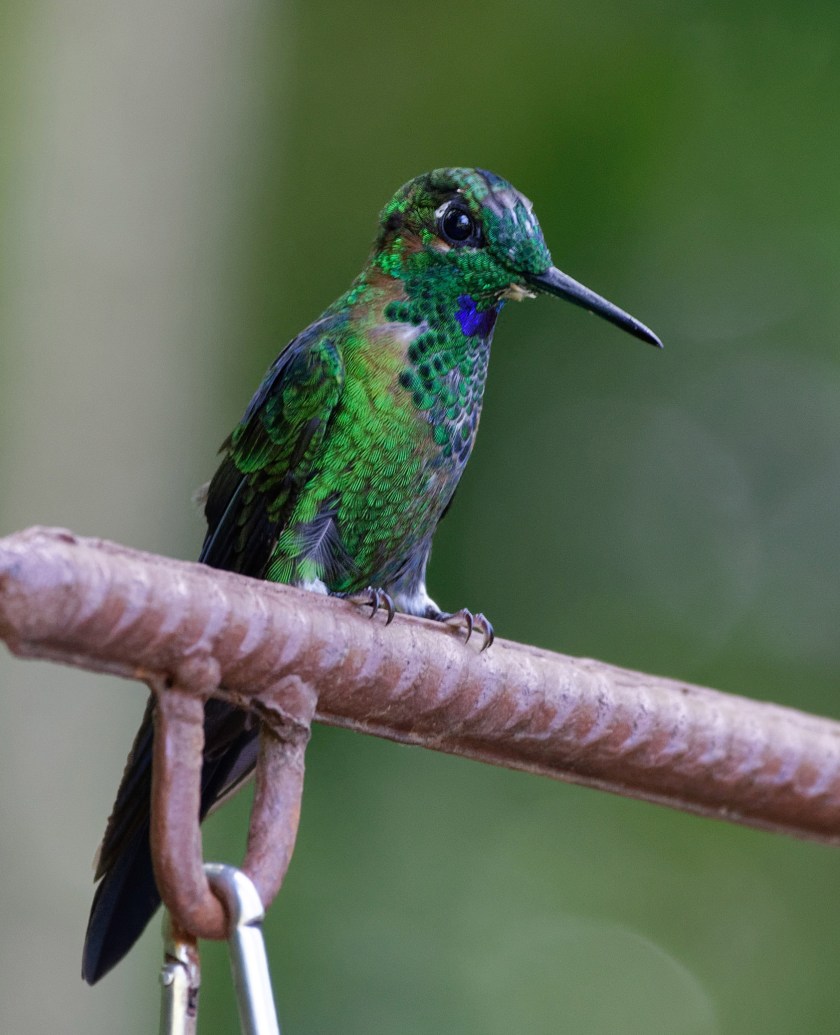BB King was born September 16, 1925 in Itta Bena, Mississippi. Mr. King was a towering figure as a blues singer, songwriter, and guitarist. I could write an entire post about the influence he had and the importance of his legacy.
 But I’d rather tell you about hearing him play.
But I’d rather tell you about hearing him play.
BB King! I saw him in concert three times over three decades. The first time I heard him live was a side room at a casino in Lake Tahoe. The room held about 500 people and it felt like a private concert. You gotta GRAB your woman! he hollered as his guitar Lucille sang out. You gotta GRAB her! The second time, ten years later, was in a stadium at the Bumbershoot Music Festival in Seattle, Washington. I based my entire attendance at the festival around seeing BB King play again. I headed for the main floor and danced the entire set. The last time I saw him was an outdoor show in Stuttgart, Germany, yet another ten years later. BB was clearly suffering from health problems and sat down in a chair on the corner of the stage most of the night. But when Lucille let loose, he was still the King of the Blues.
He performs a song called Hummingbird, and in his honor I am reprinting a post I wrote after visiting Costa Rica with its wonderful hummingbirds. Sing it, Lucille! – Jadi
Click here for Lucille and BB: BB King performs Hummingbird

February 2020
Monteverde in northern Costa Rica is one of the few cloud forests left on the planet. Winds from the Caribbean smack into currents from the Pacific. The results are a steady light mist all day.

Or, like this morning, a heavy falling rain. Uwe and I both wear the super-duper, Chinese-made raincoats we bought last year in Borneo for a $1 apiece. We unfold them and discover that these are thin, glorified garbage bags with holes cut out for our arms and heads. I’m glad to have mine – it’s still pouring. Uwe’s bummed. It’s raining so hard that he has to leave his camera equipment in its special backpack. It’s windy here, too! His camera’s way better protected against the weather than we are….

The park guide tells us about primeval forest, secondary growth, the Quaker settlers who came here and founded this nature preserve. We see almost zero wildlife, and that’s because everything is hunkered down against the shitty weather. He points out an orchid the size of my thumbnail as my sneakered feet and my blue jeans grow damper. It. is. cold.

Uwe’s face is glum. His cellphone camera is a poor substitute for the Nikon. I try hard not to think about how little fun he’s having. Then the guide points to a pale slender green object on a leaf. I peer closer in the rain.

It’s a walking stick! I haven’t seen one of these in the wild since I was a kid! I’m suddenly a kid again myself, I’m way beyond excited. “Any biosphere that’s got walking sticks is an intact one for sure!” I exclaim. Oh my god! I stand there and stare at it, wetter by the minute.
 Thirty minutes later we’re back at the park entrance’s buildings. The downpour vanishes. Uwe gets out his telefoto lens to capture the 7 varieties of blue, emerald, crimson, orange, purple hummingbirds darting in and out to the feeders on the porch. A white nosed coatimundi scurries under the hummingbird feeders, licking up the sugar water that’s dripped down onto the floorboards.
Thirty minutes later we’re back at the park entrance’s buildings. The downpour vanishes. Uwe gets out his telefoto lens to capture the 7 varieties of blue, emerald, crimson, orange, purple hummingbirds darting in and out to the feeders on the porch. A white nosed coatimundi scurries under the hummingbird feeders, licking up the sugar water that’s dripped down onto the floorboards.
 “A walking stick!” I murmur.
“A walking stick!” I murmur.
Everybody’s happy.


In memory of BB King, 16 September 1925 – 14 May 2015
NOTES: I’m still mad at my spousal unit for not taking a photo of that walking stick with his cell phone. Monteverde orchids and hummingbirds © Jadi Campbell 2020. Previously published as Let It Rain! All photos © Uwe Hartmann. To see more of Uwe’s animal photos and pics from our trips go to viewpics.de. Concert clip courtesy of YouTube.
Click here for my author page to learn more about me and purchase my books.








 Thirty minutes later we’re back at the park entrance’s buildings. The downpour vanishes. Uwe gets out his telefoto lens to capture the 7 varieties of blue, emerald, crimson, orange, purple hummingbirds darting in and out to the feeders on the porch. A white nosed coatimundi scurries under the hummingbird feeders, licking up the sugar water that’s dripped down onto the floorboards.
Thirty minutes later we’re back at the park entrance’s buildings. The downpour vanishes. Uwe gets out his telefoto lens to capture the 7 varieties of blue, emerald, crimson, orange, purple hummingbirds darting in and out to the feeders on the porch. A white nosed coatimundi scurries under the hummingbird feeders, licking up the sugar water that’s dripped down onto the floorboards. “A walking stick!” I murmur.
“A walking stick!” I murmur.